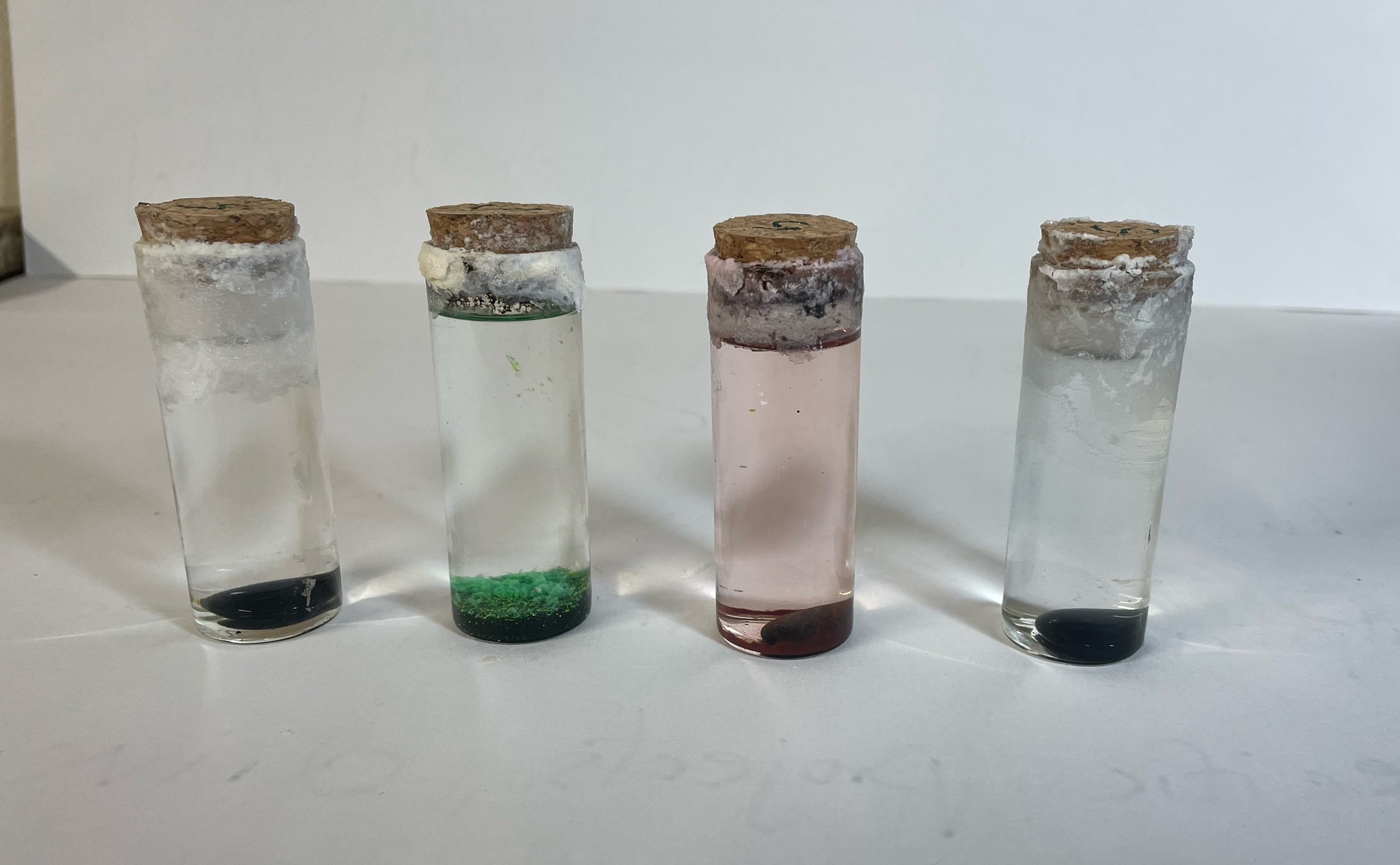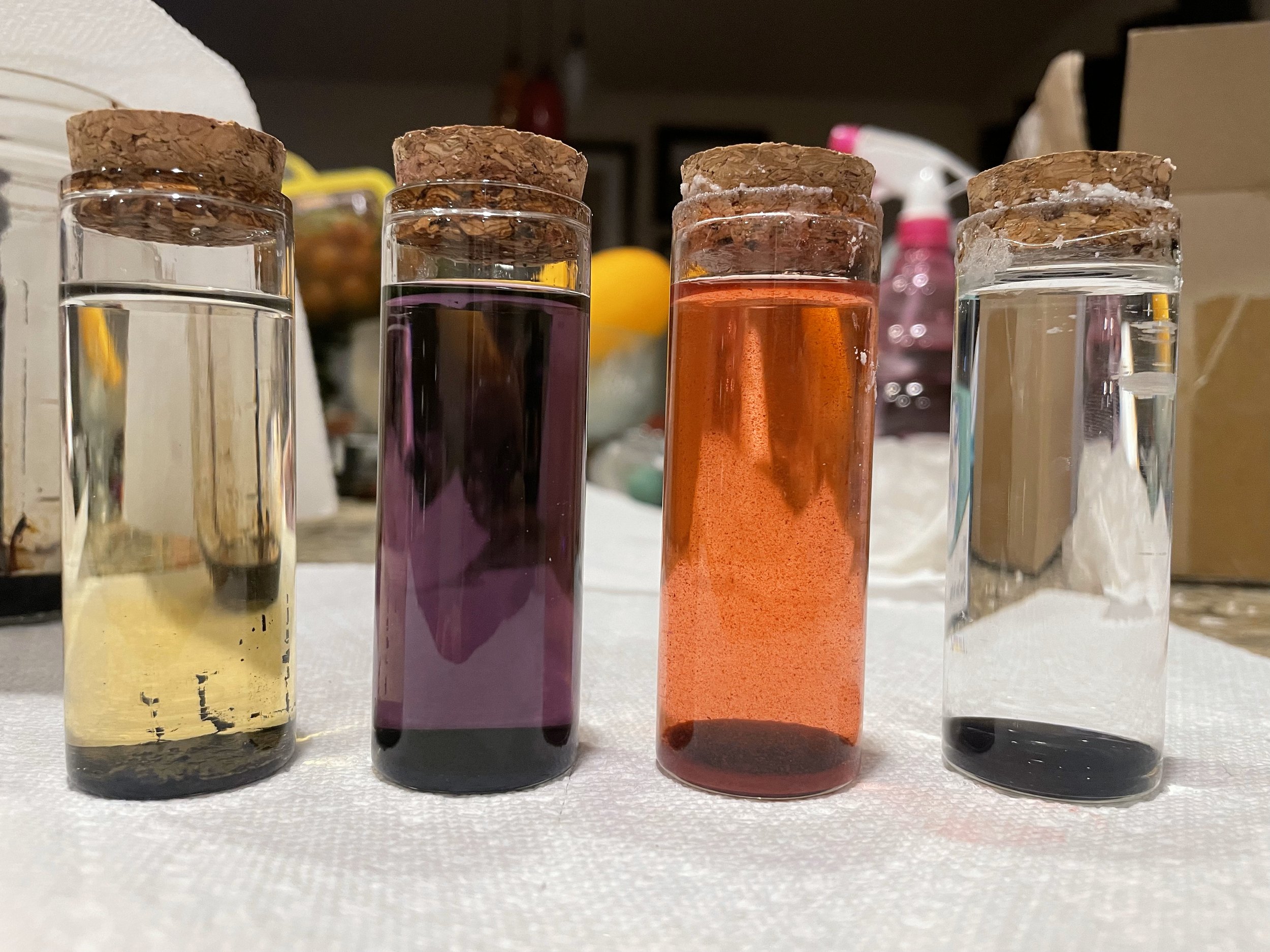This interactive ferrofluid display invites audiences to explore the dynamic beauty of Earth's magnetic field and its interplay with solar wind, a force that creates the mesmerizing auroras in our skies. There are three ferrofluid display jars with a large one in the center of the wooden container that is accompanied by two smaller bottles that can be removed for hands-on experimentation.
By manipulating magnets against the glass, viewers can observe the ferrofluid's response as it aligns with magnetic forces. This visual and tactile interaction mimics the invisible dynamics of our planet's magnetosphere, where charged particles from the sun interact with Earth's magnetic field, resulting in the phenomenon of auroras.
The wooden container is not only functional but also symbolic, glowing with customizable colored lights to evoke the vibrant hues of auroral displays. These lights emphasize the interconnectedness of natural forces and human creativity. A separate block holds three magnets with 3D-printed handles, designed for easy handling and exploration, making the display both educational and engaging for all ages.
This project reflects a fusion of art and science, inspired by the awe-inspiring natural phenomena that connects us to our planet and beyond. By translating these unseen forces into an accessible, interactive form, the display encourages curiosity, wonder, and a deeper appreciation for the Earth's protective magnetic shield. It aims to spark dialogue about the relationship between the natural world and human life, offering a hands-on opportunity to connect with the science behind one of Earth's most captivating phenomena.
For this project, I was studying the sun’s solar winds and how they interact with the Earth’s magnetic fields. Dr. Shetye an astronomy professor at NMSU, and I decided to use ferrofluid to represent the Earth’s magnetic fields. Ferrofluid is a liquid that contains nanoscale magnetic particles suspended in a carrier fluid, usually oil. When exposed to a magnetic field, the particles align along the field lines, creating dramatic spike-like shapes and motion. The goal was to create a small artwork that can reside in the astronomy department’s office and be portable to be used in outreach programs. The first step was doing a lot of research about it and how to create a display. I read multiple articles and viewed videos online, and they all were not consistent about the solution to suspend ferrofluid. I conducted experiments based on the information I was able to find to suspend the ferrofluid. Most of my experiments failed, except the saltwater solutions without anything extra added to them. I used the solution that passed and put it into containers and built the display for it.
Experiments
8 total test tube experiments
1 pitri dish – ferrofluid mixed with acrylic paint
4 test tubes – isopropyl alcohol – all failed
2 – base solution
1 – added food dye
1 – ferrofluid mixed with acrylic paint
4 test tubes – saltwater solution
2 – base solution - passed
1 – added food dye – failed
1 – ferrofluid mixed with acrylic paint - failed
Isopropyl Alcohol Solutions
Saltwater Solutions





